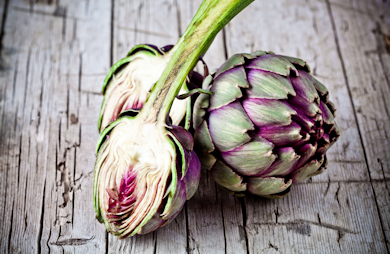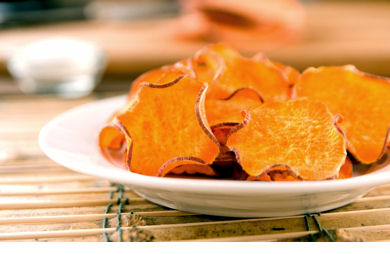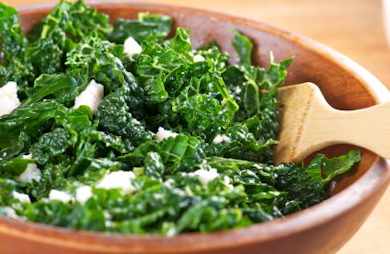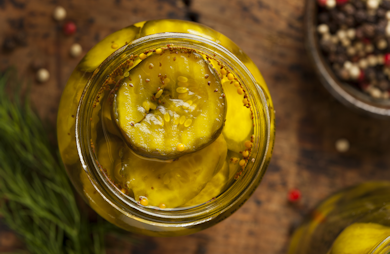|
Microwaves are obviously the speediest (and therefore easiest) way to cook. But it turns out that shorter cook times can also help to preserve more of your veggies' natural nutrients. In fact, other cooking methods may deplete the nutritional value so much that your green beans basically lose all their green... metaphorically speaking, of course. Some people believe microwaving vegetables zaps them of their vitamins and minerals. However, the main culprit of nutrient drain is actually water. Conventional methods of boiling and steaming vegetables can cause them to lose more than half of their nutrients. Vitamins B, C and polyphenols--which have been linked to preventing cancer and cardiovascular disease--are especially vulnerable to solubility. Heat from cooking breaks down the thick cell walls of some plants, releasing nutrients as they are softened. Because microwaves work by heating the moisture within food, the natural juiciness of vegetables works in your favor. After reading about these five microwavable veggies, you may never use your stove to cook them again! .png) Corn on the Cob Corn on the CobYou're having a barbecue and your whole family is over. The neighbors' kids are playing in the yard. Everyone's having a great time, but the grill is too full of burgers to fit the sweet corn. Never fear--the microwave is here! Here's the best part—you can even leave the husk on! It will insulate the natural juices and steam the ear on its own. Microwave each ear for four minutes, carefully remove with a paper towel or mitt, take off the silk and husk, and voila! So moist, you won't even need butter! If you're reading this during fresh corn season, don't forget to pick up some extra and freeze it. Microwaving is also a great method to enjoy ears of corn during the winter months.  Artichokes ArtichokesWhen it comes to sophisticated vegetables, artichokes are totally in vogue. Whether you put them on a pizza, in a dip, with a remoulade or simply seasoned, artichokes are packed full of antioxidants and dietary fiber. They are also an excellent source of iron and copper, which are essential to red blood cell formation—which is especially important for women. To cook artichokes in a microwave, rinse them and trim the pointy tips from the leaves. Remove the entire stalk. Cut each artichoke in half. Rub the cut edges with lemon to prevent browning. Sprinkle a bit of salt on each cut side, and then place this side down in a microwave-safe bowl. Pour a combination of ½ cup water and 1/3 cup olive oil into the bottom of the dish. This will add extra tenderness and flavor. Squeeze a bit more of the lemon on top. Cover the dish with plastic wrap--this seal allows the artichoke to steam. Microwave for 7 minutes per large artichoke, or until tender.  Sweet Potato Chips Sweet Potato ChipsNo deep frying, no guilt! Scrub one large sweet potato clean and remove any dark spots. Cut off the ends. Using a mandoline or slicer, create chips using the thinnest blade. Toss these chips in a bowl with: 1 tsp. extra virgin olive oil ½ tsp. salt ¼ tsp. ground pepper Coat each chip well. Don't be afraid to get your hands in there! Place chips in a single layer on a piece of parchment paper or flat tray. Microwave for 3½ to 4 minutes until crispy, keeping an eye out for however well done you like your chips. Repeat in batches. Serve with a healthy dip, or on their own!  Kale KaleAlthough kale is all the rage among foodies right now, raw kale just doesn't sit well with everyone's palate. However, kale is called a "superfood" for a reason. This leafy green is high in vitamins A, C and K, dietary fiber, manganese, calcium, copper, potassium and health-promoting phytonutrients. It is a good source of iron, magnesium and other minerals, too. All these credentials make it hard to ignore! And a microwave can make kale even easier to incorporate into your family meals. Be sure to begin with fresh kale. Cut off the thick stems, but keep the thin, tender ones and all the leaves. Place in a colander and rinse under cool running water, flipping and thoroughly removing any dirt. Shake a couple of times to remove excess water. Chop leaves and remaining stems into bite-sized pieces. Place in a microwave-safe bowl and toss with a little salt and lemon juice. Cover with a paper towel and microwave for about one minute per cup. The kale should be fully wilted when it's done.  Pickles PicklesDid you ever think you could make your own bread and butter pickles in less than ten minutes? Get ready to have your mind blown! Combine: 2 cups vinegar 1½ cup sugar ¼ cup pickling seasoning mix ½ of a white onion. 4 medium cucumbers Slice the cucumber and onion into rounds. Toss everything together into a microwave-safe bowl. Microwave on high until the onions are translucent-about 8 minutes. Store for up to three months in the refrigerator, and enjoy! Every microwave is different, so cook times can vary. Play with the recipes, make them your own, and enjoy all the time you're saving by using that handy dandy microwave!  Sarah Kellner writes for Home Depot on cooking and home appliances. To view Home Depot's selection of microwaves that you might want to consider for your veggie cooking creations, click here. Sarah Kellner writes for Home Depot on cooking and home appliances. To view Home Depot's selection of microwaves that you might want to consider for your veggie cooking creations, click here. |
Popular Entries
Related Entries
More From SparkPeople
|


.jpg)





.jpg)

.png)










